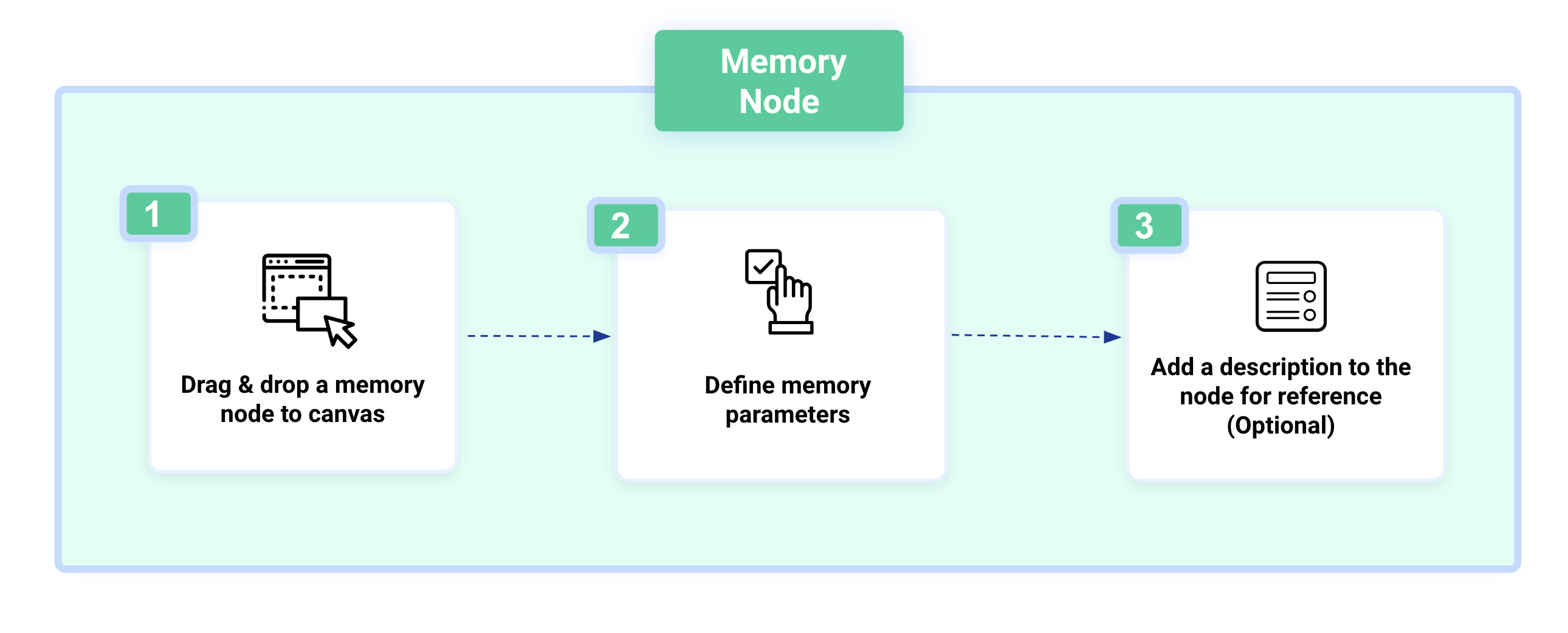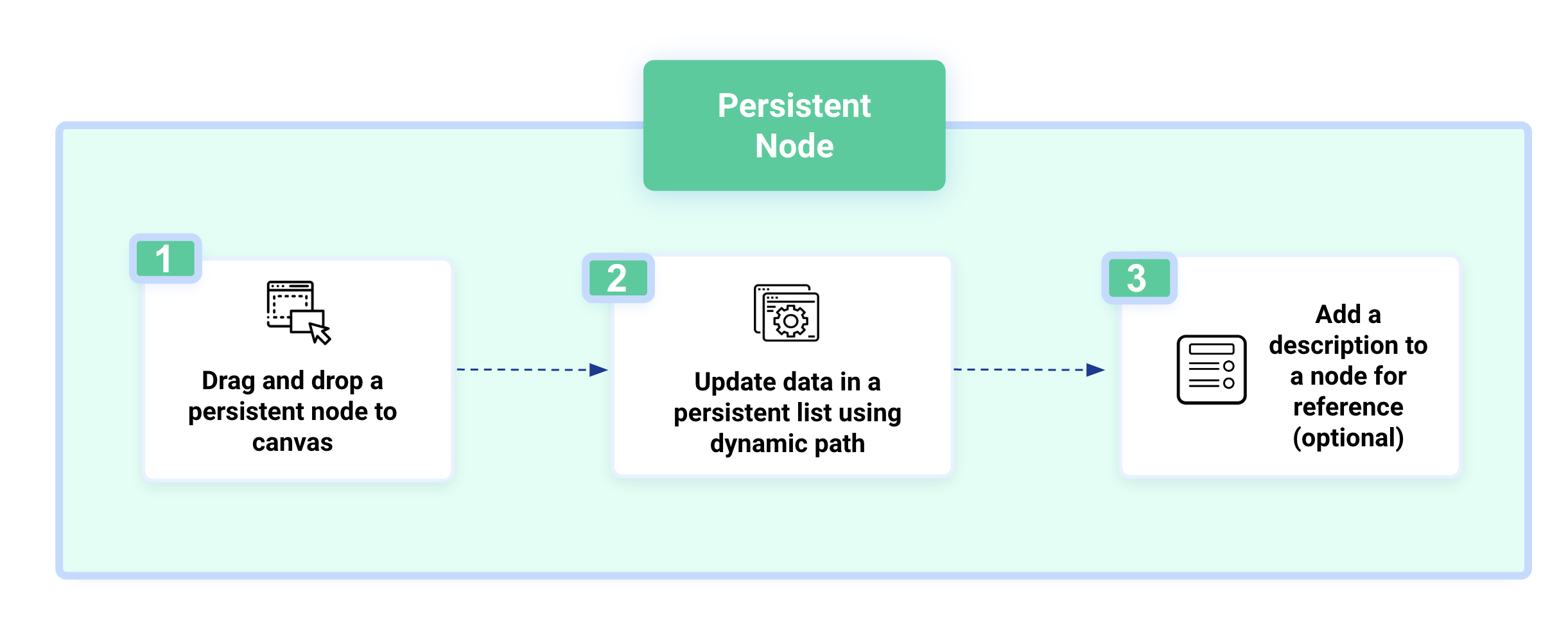Storage Node
A storage node stores static or dynamic data to utilize in other nodes of a Playbook as input data.
You can add and configure the following storage nodes:
Memory Node
The memory node stores static or dynamic values that you can use in other nodes of the Playbook. You can use the dynamic path to fetch the values stored in the memory node and use it in any other node of the playbook. For more information, see Fetch Data from Memory Node.
For example, you can configure a memory node to store a list of threat indicators.
Sample Process

Steps
To configure a memory node, do the following:
From the Nodes list, under the Storage node, drag and drop the Memory node to the canvas.
Enable Abort Playbook If This Node Fails to terminate the Playbook if the node fails to execute.
In Define Memory Parameters, enter a static or dynamic key-value pair to store in the node. For example, you can store a list of IP addresses for threat enrichment.
Click +Parameter to add additional parameters.
Under Describe This Node, add a brief description of the node. It is recommended to add a relevant description for the node as analysts can use this for their reference, and click Save.
Persistent Node
A persistent node is used to automatically update the value of a key-value pair in a persistent list or add new key-value pairs to a persistent list. For more information on the persistent list, see Persistent List.
Sample Process

Steps
To configure a persistent node, do the following:
From the Nodes list, under the Storage node, drag and drop the Persistent node to the canvas.
To add other nodes from a specific node, select the node and click Add Node. You can drag and drop any node type to connect from the existing node.
In Define Node parameters here, enter the dynamic path expression in the Key or Value field to perform an action to the persistent list. You can perform the following actions using a persistent node:
Note
The Key field in Define Node parameters here of a persistent node accepts only a dynamic path related to a persistent list.
The name of a persistent list created using Create a Persistent Listmay contain uppercase characters and spaces. You must enter a slug name of a persistent list in the key or value field of a Playbook or Playbook node. You can type ${persistent-list:: to get autosuggestions for persistent lists to choose from and then select a persistent list to autofill a slug name for a persistent list.
Under Describe This Node, add a brief description of the node. It is recommended to add a relevant description for the node as analysts can use this for their reference, and click Save.